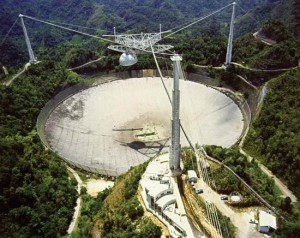Experts from theGreen Bank Telescope in West Virginia as well as the Arecibo Observatory in Puerto Rico detected six new Fast Radio Bursts (FRBs) emitting from a region far beyond our Milky Way galaxy.
The discovery — made in the direction of the Auriga constellation — is significant considering the fact that at least 17 FRBs have now been detected in this area. It is also the only known instance in which these signals have been found twice in the same location in space.
The region FRB 121102 where the signals are coming from, is located about 3 billion light years away and it was comprised by a total of 17 bursts.
Five of the recently found FRBs were detected with the Green Bank Telescope, while the other was recorded by the Arecibo Observatory, “for a total of 17 bursts from this source,” the report says. This was the third time the signals were intercepted, the first being on 2012 and the second at the beginning of 2016.
According to experts, it’s too early to tell, but the FRBs could either solar flares from a neutron star or extra-terrestrials.
In 2015, physicist John Learned — with the University of Hawaii at Manoa — and Michael Hippke, with the Institute for Data Analysis, published a research paper arguing that repeating FRB waves had a 1 in 2,000 chance of being coincidental.
Earlier this year, a team of astronomers from Laval University in Quebec published a report saying they had detected strange signals in a small cluster of stars.
Ask me anything
Explore related questions





